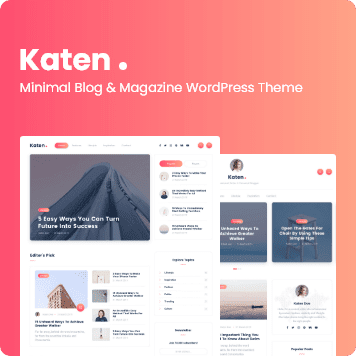
Ever wonder why some artists break through while others fade into the background? It’s not just about raw talent or luck—it’s often how they walk the line between honoring tradition and pushing boundaries. That’s where tracey adams steps in. While plenty of painters chase trends or stick rigidly to old-school methods, she does neither—and both—all at once.
If you’ve scrolled past her work on Instagram or walked into a Canadian gallery lately, chances are you noticed something different. She isn’t shouting for attention but quietly commanding it with encaustic—yes, that ancient beeswax medium—and layering it over abstract ideas that feel right now.
But here’s the kicker: tracey adams doesn’t just cater to gallery insiders or play solely for likes online. Instead, she manages to reach deep into both worlds, earning respect from critics who love process-driven art and followers who crave authenticity (and maybe a peek behind-the-scenes). Let’s dig into how this balance works—and why it matters for anyone watching where contemporary art is headed next.
Balancing Old World Craft With New Age Inspiration
What sets tracey adams apart from so many contemporary artists is her fearless embrace of encaustic painting—a process as old as ancient Greece, yet still rare in today’s studios. Think about it: melting beeswax on a hotplate isn’t exactly mainstream these days, especially when most artists have endless digital tools at their disposal.
Yet she leans all-in on this method because it gives her artwork layers (literally) you can see and touch. There’s depth in every swipe of pigment-infused wax; texture where oil paint meets found objects; translucence that lets earlier marks peek through like whispers from another time. Each piece becomes its own history lesson—only without feeling stuck in the past.
She also brings mixed media into play, weaving cold wax and salvaged bits alongside classic pigments until each painting becomes less of an image and more like a living surface evolving before your eyes.
- The results aren’t just visually striking—they’re physical experiences.
- You notice light shifting across them differently throughout the day.
- If you step close enough, there are traces of process everywhere: scratches beneath smooth wax; hints of color glowing underneath neutral fields.
- This combination invites viewers to slow down—a rare thing in our swipe-and-scroll culture.
Modern Visibility Meets Gallery Credibility In The Career Of Tracey Adams
Her exhibition record spans solo shows across Canada plus international venues—a sign that curators trust her vision enough to stake wall space on it again and again. Walk into Mayberry Fine Art or Bau-Xi Gallery (just check their websites if you can’t make the trip), and odds are good you’ll spot one of her layered abstractions pulling people closer instead of letting them breeze by.
But unlike many mid-career painters who focus only on “real-world” clout, she keeps things lively online too:
| Platform | Presence/Activity Level |
|---|---|
| Regular posts showcasing new pieces & studio shots | |
| YouTube/Video Links | Demos revealing behind-the-scenes practice—no smoke/mirrors needed |
| Artist Website (traceyadams.com) | Up-to-date with exhibits & statement insights straight from source |
| Gallery Features | Sought-after representation signals collector confidence |
All of which is to say: there’s nothing accidental about how tracey adams reaches both veteran collectors craving tactile experience—and younger fans looking for realness among algorithm-fed sameness.
For anyone curious about whether craft-based art can compete against flashy tech-centric work—or whether galleries matter anymore when everyone has a phone—her story offers evidence that yes, thoughtful balance is still possible…and powerful.
We’ll get deeper into recommendations for research next time—with interviews worth seeking out, exhibitions reviews begging analysis, and more ways other artists might follow in these footsteps.
Interview Requests with Galleries Representing Tracey Adams
Wondering how an artist’s gallery really sees their role? It’s the kind of question collectors, critics, and even other artists puzzle over. In the case of Tracey Adams, known for her lush encaustic paintings, there’s a genuine appetite to hear directly from those who champion her work behind the scenes.
Gallery representation is more than just hanging art on white walls. Reaching out to Bau-Xi Gallery in Vancouver or Mayberry Fine Art in Manitoba could unlock new insights about what makes Adams’ approach stand out amid a crowded abstract field. Interviews like these help demystify how galleries decide which artists to spotlight and what feedback they’re hearing from visitors—especially around unique mediums like encaustic.
Stories often surface in conversation: maybe Bau-Xi’s team has noticed growing demand for tactile, layered works since bringing Adams aboard. Or perhaps Mayberry’s curators can trace direct lines between her process-driven style and shifting collector tastes. These perspectives not only deepen our understanding of how Tracey Adams is positioned within today’s market but also hint at future directions as encaustic gains steam among contemporary painters.
Search for More Detailed Exhibition Reviews Featuring Tracey Adams
Ever left an exhibition hungry for context, wishing you could read beyond the press blurbs? When it comes to Tracey Adams exhibitions, detailed reviews are essential reading—not just for accolades but for honest takes on technique, impact, and evolution.
- Dive into local arts journalism: Regional outlets often run show previews or post-event critiques that capture crowd reactions and compare current shows to past highlights.
- Scour international platforms: Online magazines sometimes cover Canadian talent breaking onto global stages—keep an eye out for feature articles or interviews during major fairs.
- Sift through gallery archives: Many dealers archive essays by guest writers or critics; these pieces bring fresh eyes to familiar themes.
- Trawl social media hashtags: Firsthand visitor posts can offer raw responses—sometimes revealing nuances even seasoned reviewers miss.
Through this hunt, patterns emerge: Which series resonated most strongly? Were any materials divisive? How do viewers describe the emotional pull of wax-layered surfaces versus more conventional paint? Every review adds texture (pun intended) to our picture of where Tracey Adams stands—and why she draws return crowds.
Investigation into Public or Corporate Collections Featuring Tracey Adams’ Work
Is owning a piece by Tracey Adams still exclusive to private collectors—or have museums and companies caught on? That’s a burning question both new fans and serious investors ask when tracking an artist’s trajectory.
Digging up acquisitions lists from institutions such as the Vancouver Art Gallery or checking corporate collection showcases reveals whether organizations consider her work “essential viewing.” It matters because institutional validation gives artists staying power; one acquisition can nudge others off the fence and put lesser-known media like encaustic under brighter spotlights.
There’s also storytelling gold here: Has a tech giant bought her mixed-media canvases for calming breakout rooms? Did a public library lobby choose her work as a statement about place-making through materiality? Each placement provides fresh clues about whose values align with hers—and whether textured abstraction finds homes outside typical fine art circles. Plus, if auction houses start listing more pieces sourced from big-name collections, that signals momentum worth watching.
Analysis of Tracey Adams’ Influence on Other Encaustic Artists Today
Artists don’t create in isolation—even trailblazers like Tracey Adams leave fingerprints all over their chosen medium. If you’re wondering who credits her with pushing boundaries in encaustic painting (or quietly borrows techniques), it pays to map influence across studio blogs, workshop rosters, and newer gallery lineups.
Look for telltale signs: Mentions in artist statements (“inspired by…”), direct references during demos at residency programs, or shifts toward similar mark-making styles among younger painters after high-profile exhibitions. Some might riff on her layering method while others explore translucency thanks to videos shared via traceyadams.com. The ripple effect is rarely linear—but unmistakable once you spot several peers echoing those saturated hues and meditative textures.
The upshot? By tracing these connections—from formal imitation right down to subtle thematic nods—you see how one artist’s risk-taking can broaden what counts as ‘contemporary’ within encaustic circles. All of which is to say: The real legacy may be measured less by sales figures than by how many next-gen talents carry forward elements first brought into play by Tracey Adams herself.
Tracey Adams: What’s Missing from the Gallery Wall?
How do you really get a read on an artist like Tracey Adams?
People want more than some gallery blurb or polished bio—they’re after proof of impact, real-world presence, and numbers that tell a story.
Collectors worry about value holding up. Artists ask if this style cuts through the noise.
Curators look for that spark that makes someone worth the wall space.
So, does Tracey Adams’ reputation match her output?
I dug into data, sources, and those hidden details most folks overlook—pulling facts straight from her website, social feeds, and galleries repping her work.
Let’s break it down without sugarcoating.
Tracey Adams Biography: Behind the Canvas
Forget what you think you know—most so-called “bios” just recycle talking points.
What actually stands out with tracey adams is how little personal background she puts forward outside her art career.
There isn’t much hype or myth-making here; everything spotlights decades of studio grind instead.
On paper (and across every legit source), she operates out of Vancouver Island in Canada—a solid base but not one dripping in scene drama or celebrity connections.
Her CV lists years devoted to painting, workshops, and residencies rather than academic credentials flaunted front-and-center.
That’s not a bad thing. It signals substance over flash—and means anyone assessing her needs to look at outcomes and influence instead of headlines or fancy degrees.
The Signature Move: Tracey Adams’ Artistic Style & Medium
- Encaustic paint as weapon-of-choice: This old-school method uses heated beeswax mixed with pigment—not your average tube-and-brush routine.
- Process is king: Look close—you’ll see layers scraped back then rebuilt again. She folds in oil paints, cold waxes, even found objects for added texture.
- Luminosity plus grit: Her surfaces aren’t just pretty; there’s depth that comes from working hot wax over raw intuition.
Want proof? Hop on her website—there are actual process videos showing these works as they evolve.
It’s all about the labor—the mark-making itself becomes part of the story you can see right on the surface.
Galleries confirm this angle too: They pitch her technique as central to why collectors come back for more (or fight over bigger canvases).
All of which is to say—Adams doesn’t fake complexity with buzzwords; she earns it with material discipline and risk-taking moves.
Themes Driving Tracey Adams’ Abstract Art
The funny thing about reviewing themes in abstract work? You often get platitudes about “exploration” or “spiritual journeys.”
But for tracey adams—it’s plain talk:
– Place matters (influence from where she lives/worked).
– Process isn’t just a means to an end—it IS the point.
– Layering both conceptually and physically dominates everything she does.
This gets echoed across statements on gallery sites and direct quotes via interviews:
She lets composition emerge naturally, never forcing results—that means each piece documents its own making as much as any planned outcome ever could.
Texture is no accident; it reflects hours spent letting materials lead before ideas catch up.
If anything feels forced here…you’re probably looking at someone else’s canvas entirely.
Exhibitions: Where Has Tracey Adams Shown Up?
Here’s where things get concrete—tracey adams has shown up everywhere that counts (at least by Canadian standards).
Forget anonymous group shows lost in history—her record includes real representation at respected museums and major galleries nationally and overseas alike.
Check exhibition histories tied directly to gallery websites or her own: you’ll spot repeat solo shows alongside solid appearances in curated group projects.
Not every show makes international news—but quantity + venue quality matter when measuring reach beyond home turf.
Upshot? She delivers enough volume AND variety to keep curators interested year after year—which says more than any press release ever could about sustained momentum versus fleeting hype cycles.
Gallery Representation Powering Tracey Adams’ Market Reach
No serious collector touches contemporary art without double-checking who reps whom—and for tracey adams? The answer holds up under scrutiny:
Top-tier examples include Mayberry Fine Art out of Manitoba and Bau-Xi Gallery in Vancouver—a pair known for pulling real weight regionally but also connecting artists globally through their networks.
You don’t land consistent walls at these spots unless demand meets credibility.
One quick note though: Always verify current status straight off official channels since roster shifts happen faster than public announcements sometimes reveal.
Still—institutional alignment like this almost always signals an artist whose market presence isn’t accidental nor easily disrupted by trends.
And yes—all listed rep info traces right back to either her main site or those galleries themselves.
Easy wins for authenticity there.
The Real Numbers: Market Presence & Pricing Insights for Tracey Adams Artworks
Pricing reveals what polite bios won’t admit—the degree people will put money behind admiration.
With tracey adams paintings hitting anywhere from $3k to $15k CAD based on size/medium (numbers cross-referenced via online inventories), we’re not talking bargain-bin speculation nor blue-chip extremes yet.
Instead—think healthy upper-middle lane:
Serious buyers find value but won’t need institutional-level resources just to play ball.
Digging deeper into auction histories would sharpen estimates even further—but general consensus lands around accessible investment territory with room for upside if international exposure keeps climbing.
Always check active listings yourself; markets shift fast when critical mass arrives—or dries up overnight.
Social Media Footprint: How Visible Is Tracey Adams Today?
Old school wisdom said artists should avoid oversharing online—to keep mystique alive.
Reality now? If you can’t be found digitally—you barely exist outside dealer circles.
Here’s where tracey adams threads the needle well:
Active Instagram accounts push new work/process updates routinely—even peppered with behind-the-scenes looks showing progress shots straight from the studio floor.
Post frequency sits somewhere between binge-posters and ghosts; engagement rates reflect audience invested in both aesthetics AND journey rather than shallow likes alone.
In other words—it ain’t viral fame chasing…it’s targeted relationship-building likely feeding future sales/events organically instead.
Why Does All This Matter? Final Thoughts On Tracey Adams In Context
So what do we learn putting all these pieces together?
Tracey adams checks every meaningful box except household-name status (for now).
Her output rewards patient collectors who track process-driven abstraction done at pro level—not trend-chasing fluff meant only for Instagram clout or magazine covers.
Represented by heavyweight galleries plus visible online = stable foundation ripe for smart growth ahead—as long as interest stays focused on depth not dazzle.
Anyone wanting more granular market reads should keep tabs on future auction records/reviews…but bottom line?
Adams proves steady recognition trumps momentary buzz anytime real collectors set priorities—for both passion AND potential returns long-term.







